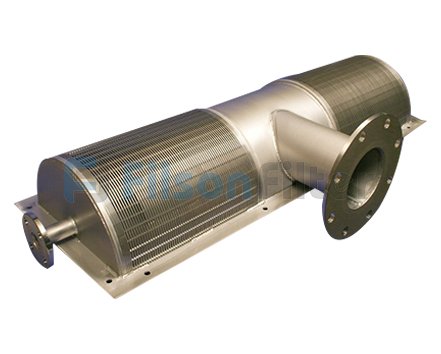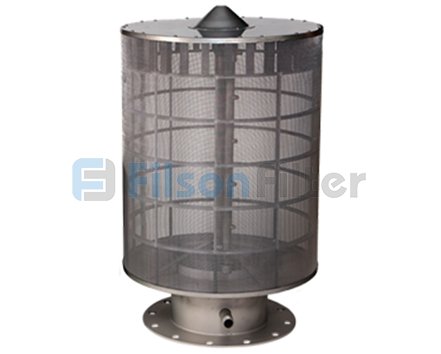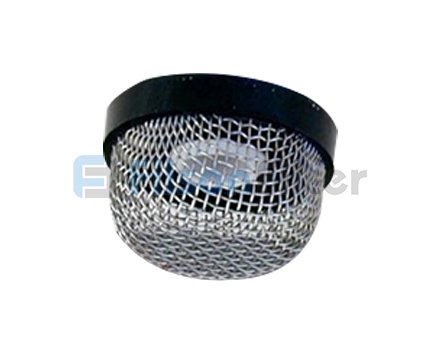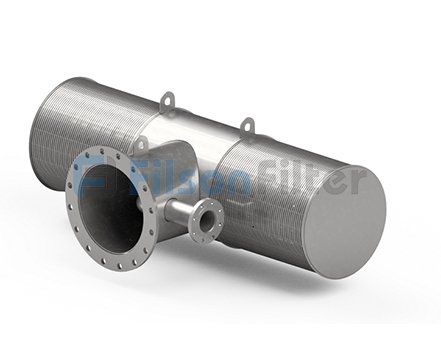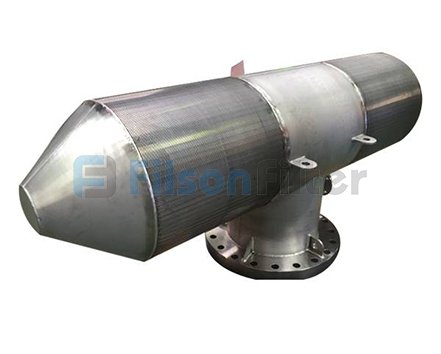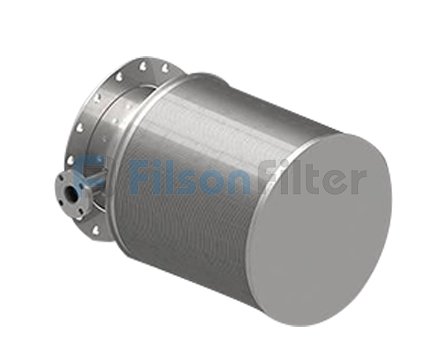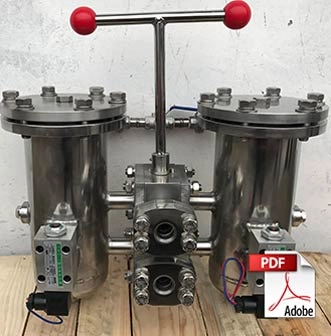Not Only a Intake Screen factory, But Also Your Best Business Partner
Filson intake screen design provides a physical barrierwith constant flow velocity, to effectively protect aquatic organisms. Since the v-shaped wires of intake screens, a mount of fish and other aquatic organisms larger than the slot size will not be entrained.
In addition to standard Filson intake screen, we are also available to customize special intake screens for your difficult applications. Filson has a specialist engineer team dedicated to water treatment, thus can promise you to obtain the best intake screen to suit your requirements.
Intake Screen
Why Choose Filson Intake Screen?
- VIP price: factory price to offer you more economical costs
- OEM service: free customized service with low MOQ
- Fastest shipping: ship in one day by your preferred transportation
- Quality control: each product experienced a strict quality inspection before delivery
- Instant response: your message will be replied in 12 hours

Filson: Your Ideal Intake Screen Manufacturer Selection In China
Filson intake screen is a type of wedge wire screen product generally used to extract water from sea, rivers or lakes to use as cooling water, process water. It is an economical and reliable choice for aquatic life protection and debris removing from surface water.
High grade stainless steel is the most commonly used material to fabricate Filson intake screen, usually SS 304/316L. So it always exhibits exceptional corrosion resistance and superior pressure adaptation under challenging underwater environments.
With the robust construction, Filson intake screens support large volume flows passing through. And its unique wedged structure reduces the effects of blocking and increases the backwash efficiency.
After a period of use, your intake screen may be clogged with accumulated debris. Therefore, you are recommended clean the intake screen from the surface periodically with high pressure water jetting or biological-friendly chemical solution.
Meanwhile, Filson allows an airburst system to be a part of intake screen, when you choose to remove unwanted debris through a rapid release of high-pressure air. It is very suitable for Filson intake screen to provide the effective backwashing.
Besides, Filson intake screen has no moving parts to avoid replace frequently and reduce the maintenance costs. Its unique and flexible design provide maximum filtration efficiency without operation interrupting.
Filson supplies various shapes of intake screen, including T-intake screen, half intake screen, drum screen and flat panel. Each Filson intake screen is 316(b) compliant and experienced strict testing by our complete quality inspection line.
Among them, T-intake screen is a perfect choice for regular water extracting from lake, river or ocean as its larger filtration surface. Meanwhile, the drum screen is extremely popular in low flow rates and general service applications.
What’s more, Filson has no MOQ limit of intake screen. Even you need only one intake screen, you can contact our sales directly. And we can meet your urgent order by our sufficient stock and a group of skilled workers.
Filson has rich experience in manufacturing filter screens & filter elements. No matter intake screens or other filters like sintered metal filter cartridge, sintered mesh screen, wedge wire screen, wedge wire filter…, Filson will always be your best business partner in the filtration field!
Anything else doubts you? Please contact us at +86 157 3695 8886 or send an email to sales@filsonfilters.com right now!
Just working with Filson! Our product quality and after-sale service will never let you down!
Filson Intake Screen Features:
- Without moving parts
- Optimum protection for aquatic life
- Easy to clean since wedge wires
- Minimal pressure drop
- Flexible design for depths and locations
- Dependable water delivery
- High water flow
- Available airburst cleaning system
- Low maintenance needs
Filson Intake Screen Specifications:
- Raw material: SS 304, SS 316L, Copper-Nickel, Duplex, Super Duplex, Monel 400, Alloy 20 …
- Screen diameter: 0.75” – 38”
- Slot size: 0.001” – 0.625”
- Type: T-intake screens, drum screens, flat panel, half-barrel
Filson Intake Screen Applications:
- Wastewater treatment
- Oil & Gas industry
- Power generation
- Food & Beverage industry
- Pulp and paper industry
- Pharmaceutical industry
People Also Ask
An Intake Screen is a mechanical device used in water filtration.
It works to filter out debris, foreign matter, and sediments that may interfere with the correct function of a pump and hoses.
This system consists of a large open area and low-velocity flow through the whole screen surface.
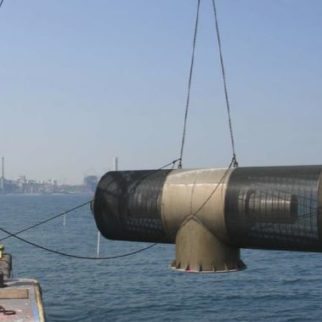

Intake Screen
An intake screen is required for most water and waste-water treatment plants.
An intake screen traps small parts of trash and other dangerous objects.
These objects might clog the pumps causing expensive repairs or downtime of the equipment.
The screens are used in plants that treat surface water and not in systems that use groundwater.
The benefits of installing a water intake screen are as follows:

Benefits of Intake Screen
- It has Copper-nickel units that are perfect for anti-befouling.
- Water intake screens are one of the most widely used filters in today’s market.
- They also prevent potentially contaminating debris from entering the water supply through the intakes.
- The intake screen prevents debris from entering the pump, preventing waste from clogging the pumps and other applications.
- The intake screen can eliminate all kinds of sediment and provide pure water for industrial or agricultural use.
- Installing a water intake screen in industrial and municipal facilities is an efficient way of water filtration.
- These screens are used primarily as an anti-entrapment device and a safety barrier.
- Its Multiple and Flexible designs can be used for specific depths and locations.
- In a nutshell, intake screens can help optimize the performance and longevity of all types of water pumps.
- It has a Reliable and protective system for aquaculture.
Four main types of screens are utilized in water intakes and can be directly related to the end applications. These screen types include
- T-intake screens
- Passive screens
- Cylindrical / Drum screens
- Half Intake Screens
T-Intake Screen:
The T – intake screen, as the name reflects it has a T shape. The T-Intake screen is the most popular among intake screens.
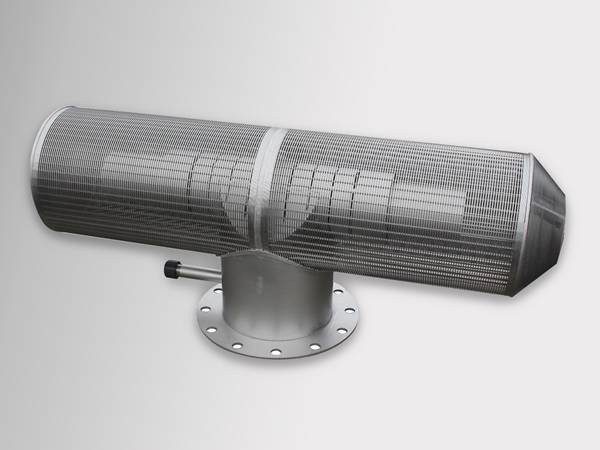
T-Intake Screen
These screens are usually planned to remain operational in challenging water environments.
T-Intake screens protect water animals and save money.
These screens reduce the speed of water flow for the safety of water animals. These screens also ensure that no components break down or wear out.
This means there is no need for replacement parts and costly repairs.
Passive Screen:
Passive intake filters are more specific to certain situations. You can use these screens far from shore or seashore.
They prevent the crossing of debris and marine life while allowing water to pass through.
Some inactive water screens include multiple layers within the screen.
These screens incorporate a bypass system. The option exists to eliminate large debris at one location and keep them from entering the actual pump.
Cylindrical/Drum Screen:
These cylindrical screens often work in still and calm aquatic areas.
It works more efficiently in regions that have smooth oceanic movements and is barely noticeable.
The perfect water filtration system for drum screens in lakes and reservoirs with low flow rates and stable water conditions.
Such types of Water intake screens are essential for aquatic filtrations in specific areas.
Debris can build up on the screen surface, so installing a drum screen vertical or horizontal is essential.
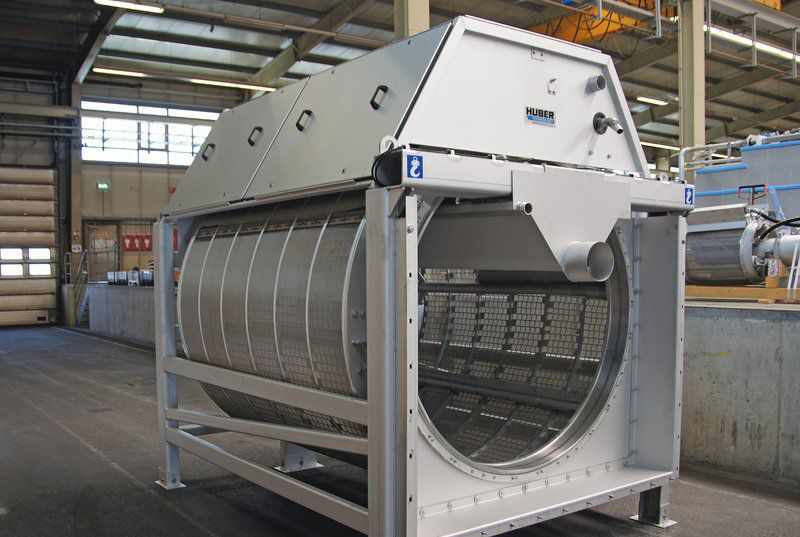
Cylindrical/Drum Screen
Drum screens are also the least expensive form of water intake.
These screens are affordable, and you can get them at a low price.
Half Intake Screens:
These types of water intakes are made for deep aquatic environments.
These give the drift properties of a T-shape water intake screen, which is usually used in deep water.
But the best part of this intake screen is its small size.
It allows it to be placed at the bottom of lakes and rivers where T-type intakes do not work well.
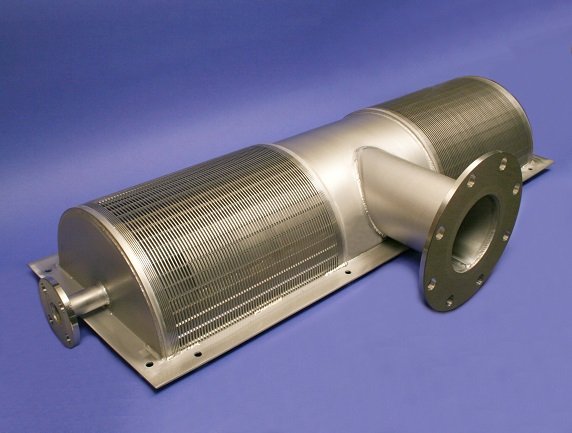
Half Intake Screens
It is a more reliable intake screen than T-intake Screen.
Firstly it’s essential to consider the environment in which your intake screen will be used.
- Deliver full-rated unobstructed pump flows.
- Self-cleaning functionality.
- Proven technology and no power consumption.
- Standard configurations.
- Hydro burst system.
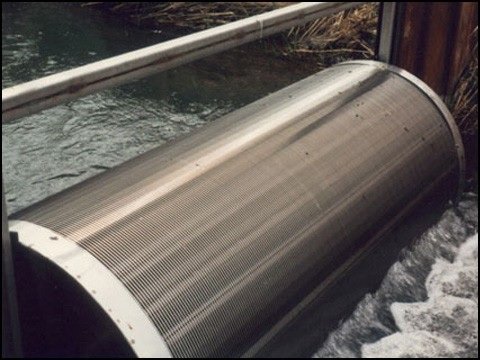
Features of Intake Screen
- Custom design.
- Customizable airburst system.
- Minimum head loss
- Maximum operational efficiency
To find the right mesh filter for your water sediments, knowing what’s available on the market is essential.
You should know the design concept to remove different substances from water.
There are four things that you have to know while selecting a water intake screen.
Housing Selection:
Selecting an intake screen is a process of determining what type of housing you need.
If you already have a water filter installed, you will know the inlet and outlet size.
The flow rate often varies. Figure out your flow rate so you can choose a filter accordingly.
Keeping these things in consideration, you will get perfect housing as per your needs.
Mesh Material:
Stainless steel mesh is made of 316 stainless steel, which is corrosion-resistant and durable.
Stainless steel is more durable for particles and sharp sediment because the material won’t rip.
This material is considered more durable and suitable for the process of intake screen.
Mesh Size:
There are many sizes available, and you can select any one depending on your need.
It is essential to decide which filter mesh size to choose and what you are trying to filter out of the water.
Mesh Sizes are different for different materials. For example, you may need a mesh element with a rating of 100 or higher for sand.
The capacity of your working process depends upon the Mesh Size.
Element Type:
There are two different types of elements:
- Separators
- Filters
Separators:
They work the same way, with one exception – separators allow for more sediment to build up before purging is necessary.
Partitions divide into segments the whole process and improve the efficiency of the intake screen.
Filters:
You must know that the filter for a large housing will look different from that for a small one. The primary purpose of the filter is to provide filtered output.
There are some critical differences between these two screening systems. You should keep in mind while choosing the appropriate one as below:
Traveling Intake Screen:
The traveling intake screen is also known as the running intake screen. More attributes include:
- Require additional processing to manage and take out debris from the waterbody.
- Self-cleaning screen.
- Periodically, you need to take down this system for manual cleaning and maintenance.

Traveling intake screen
- As needs change, it is possible to retrofit an existing installation
- Screen life is limited due to the effects of wear and tear from the basket chain rotating unevenly.
Stationary Intake Screen:
Stationary intake screens are often static in the water. More attributes include:
- Reduced operating costs. Moving parts are not needed for the system, so there can be a lower risk of failure.
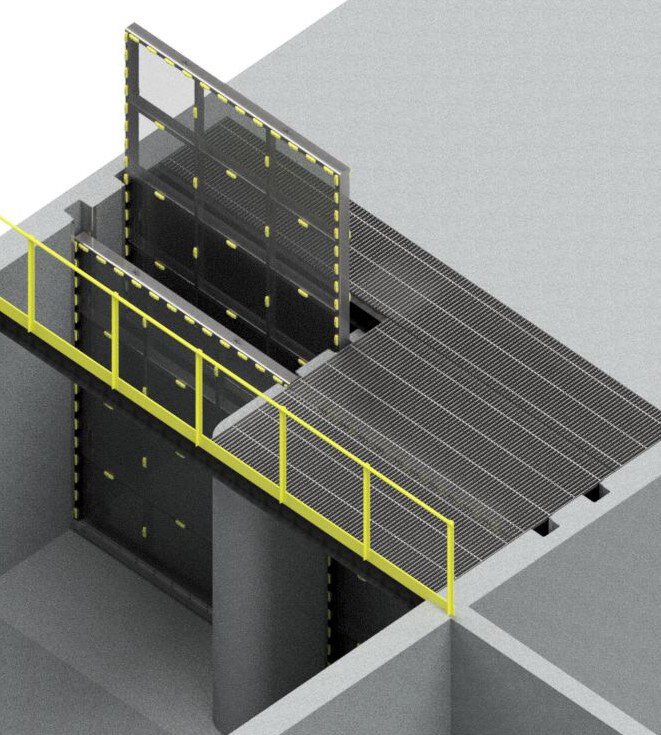
Stationary Intake Screen
- The stationary intake screen does not need the power to work. However, if you build an airburst system, then they will need electricity to operate.
- The stationary intake screen has a flexible installation process.
- For working efficiently, stationary screens need sweep velocity that helps clean the screen naturally.
- This Stationary intake screen system is more prone to befouling.
There are several benefits associated with your passive intake screen.
Some of the main benefits are as follows:
- It can eliminate the need for expensive fish and debris handling equipment when designing a passive intake system.
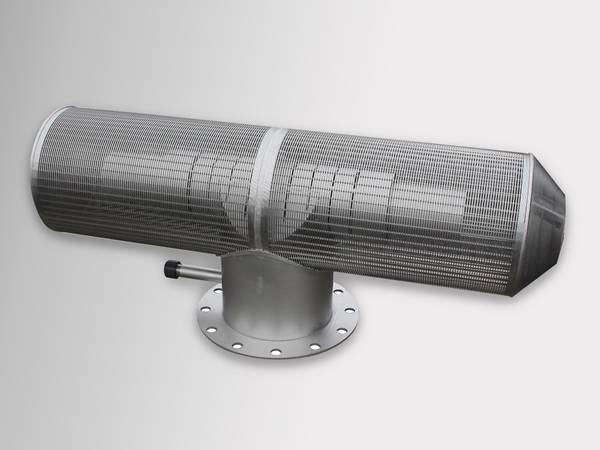
Advantages of Passive Intake Screens
- A passive intake screen has the advantage of reducing the requirement of civil work.
- This system also minimizes the maintenance cost.
- This unique design of passive intake screens reduces the blinding effect and improves the duration between cleaning cycles.
There are some ideal applications of drums intake screens.
A few of the applications are as follows:
Drum-style intake screens are suitable for lakes and reservoirs, where the water doesn’t flow in a consistent pattern.
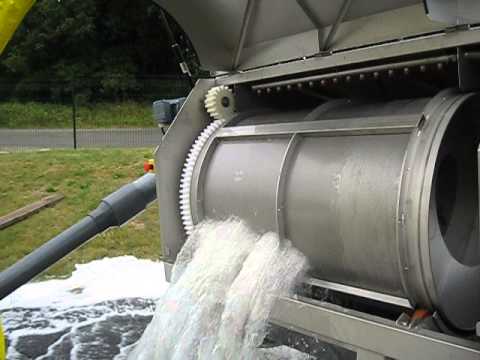
Applications of Drum Intake Screens
If space is limited, a T-intake screen won’t work.
Drum intake screens are an easy installation solution with a small footprint, perfect for the limited space areas.
Drum screens are a versatile solution for any project.
You can install drum intake screens in vertical or horizontal positions.
You can also customize it to meet specific intake requirements.
Drum intake screens are environment-friendly. These screens are compatible with challenging weather conditions.
The materials used in making water screens are dependent on the applications of a screen, including the flow rate, flow, velocity flows, and applications.
Following materials are the best materials for making a water intake screen:
- Copper
- Nickel
- Mild Steel
- Stainless Steel
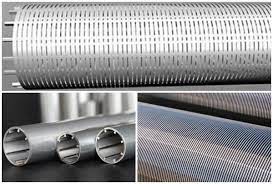
Best Material for Making Water Intake Screen
- Aluminum
- Bronze
The best material that is used for making the water intake screen is stainless steel.
Because stainless steel is substantially more durable than aluminum or plastic and can cut down on maintenance time.
This robust material deflects gravel and other abrasive debris allowing water to pass through.
This screen also removes anything that threatens the pumps, intake pipes, or motor.
Stainless steel also has much better longevity than aluminum screens, which can become brittle in freezing temperatures.
Stainless steel is a top choice for water intake screens, screen panels, and waterways because of its durability.
Stainless is the most corrosion-resistant material in the industry and is ideal for moist or wet environments.
Manufacturers can make custom water intake screens of your desired material and specifications.
Besides these, you need to know about the effects of choosing material before figuring out which intake screen material is the best for your intake screens.
Yes, water conditions will affect the choice of intake screen material.
Some particles per gallon of water can significantly affect the performance of intake screens.
For example, if water flows into a stream at 3 feet per second (fps), 1.35 feet below the surface.
Assuming no production of primary current, the flow is approximately 60% solids.
In city water, usually from Lakes, you need to produce only 5-10 fps for most uses because so many people live within five miles.
So water condition also affects the choice of screen material.
If the water is dirty and polluted, it will affect the performance of the intake screen certainly.
When a water intake system is being designed, carefully choosing a water intake screen is crucial.
Some main parts are affixed to the intake screen.
Gravity Filters:
This is a stable solution for filtration plants.
The primary function of this filter is to remove impurities such as sand, activated carbon, and other materials.
It filters the water and ensures the even distribution of air and water during backwash phases.
Gravity filters are stainless steel constructions that offer a high open area for an optimized filtrating cycle.
These filters have a firm structure and need no maintenance.
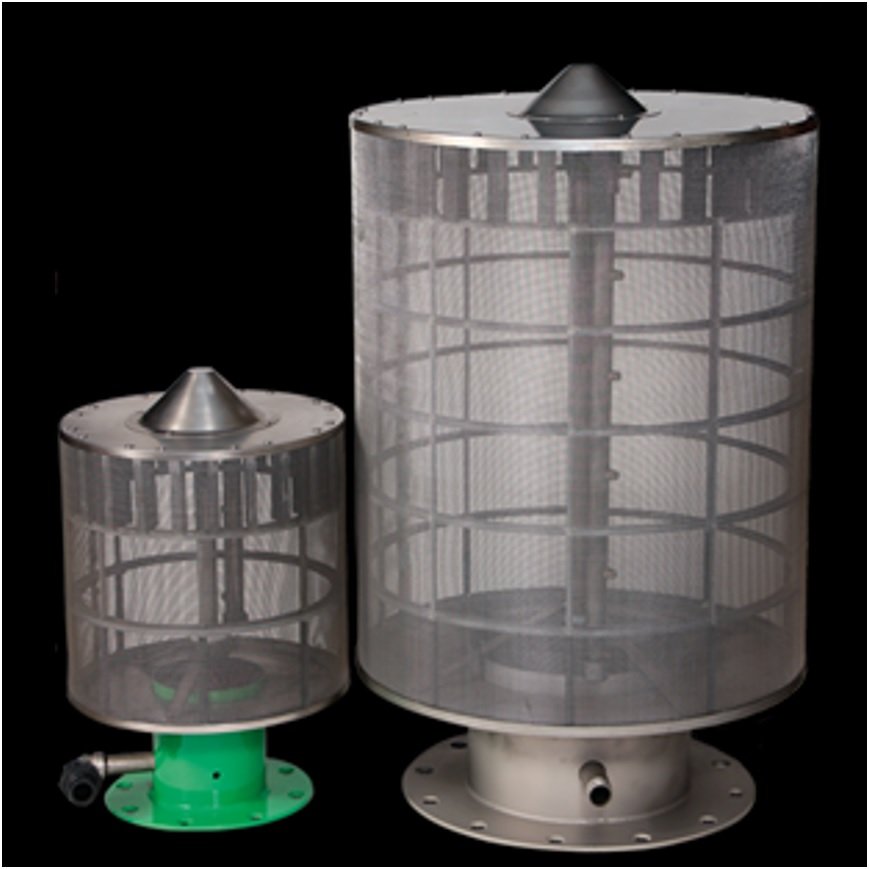
Gravity filters
Distributors:
Distributors enable an exceptional flow of liquid throughout a medium without any wall effects or channeling. This allows for maximal efficiency.
A header pipe or hub connects screen tubes to keep the collector/distributor working at maximum efficiency.
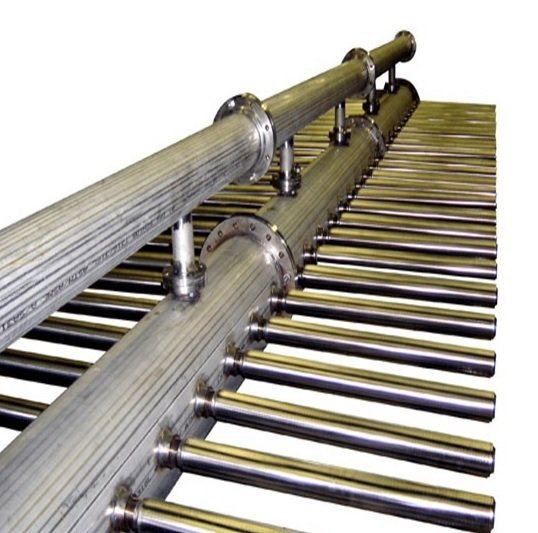
Distributors
Every lateral can be mounted on perforated pipes to optimize mechanical resistance and efficiency.
To attain this, holes are calibrated to achieve a smooth flow.
Coanda Screens:
Coanda Air/Liquid screens are made to fit all shapes and sizes of water environments.
These screens use stainless steel in manufacturing.
The size of the screen depends on the use area.
The good news about this product is that the stable and sturdy construction makes it easy to maintain.
And the life expectancy is long.
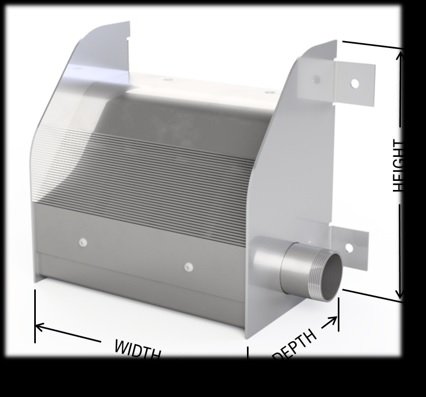
Coanda Screens
You can manufacture them in nearly every size and opening width so that their filtration will work for any application.
Nozzles:
Designers of industrial nozzles have a hard job.
They have to balance welded structures to withstand very high stress, anti-clogging surfaces, and corrosion resistance.
A great choice is a nozzle, which offers all three benefits.
The typical installation steps of intake screens are given below:
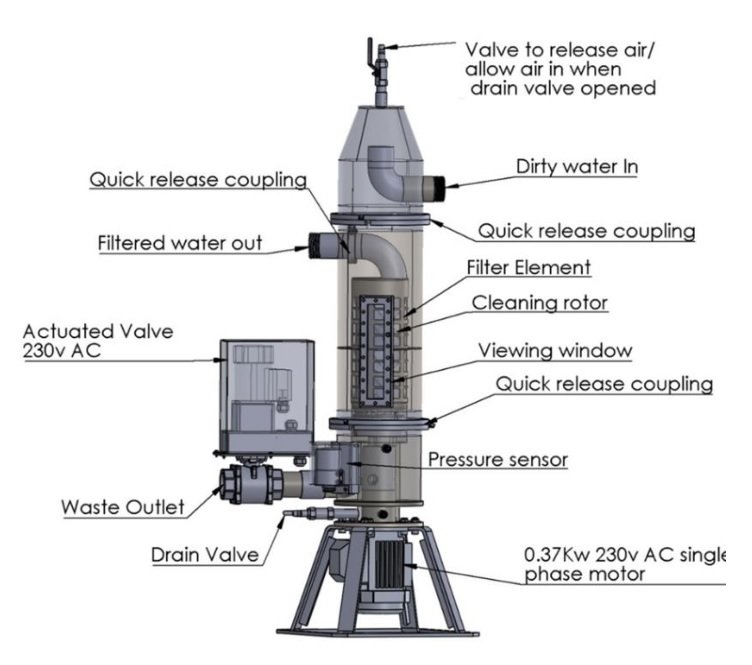
Installment of Intake Screen
- The first step is to create a pipe opening through which water will flow from the source to the turbine.
- Next is to cut and install either via screw or cement the passive or active screen intakes.
- Once these are set up, all water that flows through it will need to pass by the outer perimeter of the rotor screening.
- Ensure you clear away any obstructions of the intake holes, remove the filter cartridge and replace it with the screen.
- When installing screens, ensure the intake is angled toward the outside water line if using infusions with internal pumps or surface skimmers placed in-line.
- If placing your pump directly next to the screen, install slightly above the water line for proper water flow.
- Permanently seal intake screens with silicone to help prevent debris from entering the pump chamber when debris plugs the screen.
It is imperative about how to connect multiple screen assemblies to the intake chamber.
While connecting the piping to the screens, the pipes should be uniform.
Furthermore, the design should produce a balanced design flow.
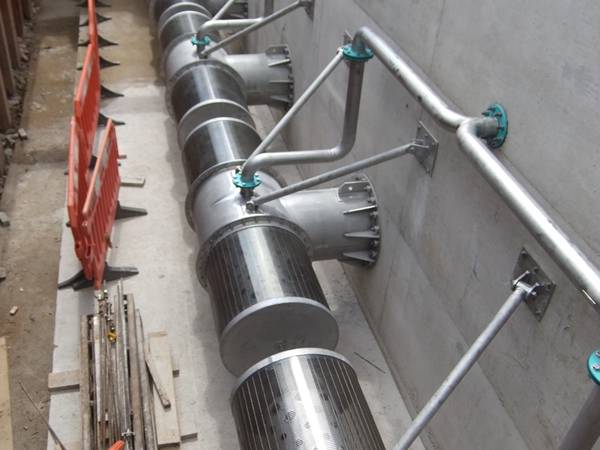
Pipe Multiple Intake Screens
You can balance the system by connecting multiple intake screens with additional effort.
Symmetrical Systems:
Symmetrical systems have a design that eliminates the need for balancing. But if they’re not, you’ll have to create balance somehow.
Asymmetrical Systems:
Because of their construction, asymmetrical systems with one screen directly across the intake line need balancing.
You may need to know the specific Symmetrical and Asymmetrical systems, including the screen assembly’s head loss.
You can find this information from the expert engineers available at the manufacturer’s website.
Yes, there are self-cleaning water intake screens.
- The intake screen is designed to prevent fish from being harmed. It has a low approach velocity and is self-cleaning.
- Internal and external brushes eliminate any debris accumulating in the structure, preventing clogs or suspended solids from building up.
- Using durable and robust material, the screen is quick to clean and low maintenance.
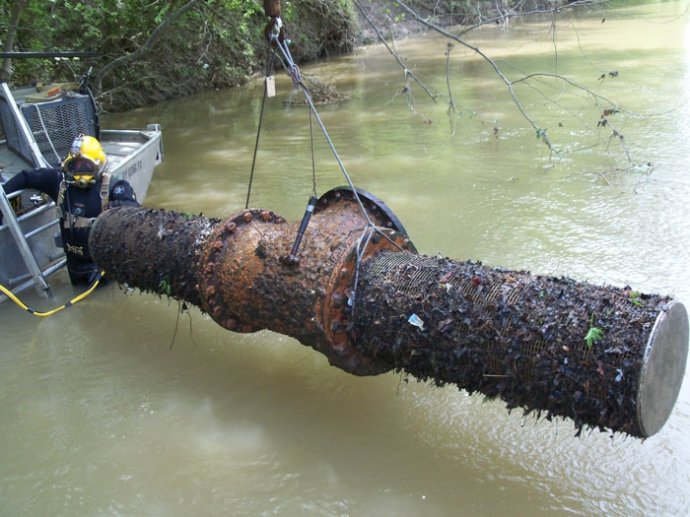
Self-Cleaning Water Intake Screens
- The construction material consists of a 3mm slot Grade 304 stainless steel wedge wire.
- It creates durable and long-lasting self-cleaning water intake screens.
Mesh size is determined by what needs to be filtered out of the water.
- In water filtration, different terms define the size of what will be removed
- The opening in a screen is the space in which water and particles can pass through.
- There is a mesh size for one square inch of screen, which is the number of openings.
- A sediment filter is a pre-filter for other water filters. Make sure you get a filter with the same mesh size as the larger micron rating of your other filters.
For example, if you want to filter water with an 80-micron filter, you would need a mesh size of 140 or smaller.
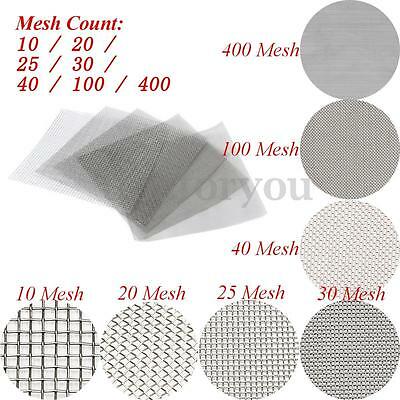
Mesh Sizes
Many factors affect the intake screen width for using:
- Flow Rate
- Mesh Size
These both are important to dictate the intake screen width.
Some critical guidelines for choosing the screen width are:
- When the choice is between a deep, narrow interface, you should choose less width. Otherwise, go for a larger-width design.
- When planning, always keep in mind the importance of pleasing the eye.
- To ensure you get the agreed-upon bid, please clearly state your needs and operating philosophy.
Yes, intakes screens need extra protection because of their small surface area.
The intakes screen is less efficient at removing sticks, leaves, and other organic material than a pump or an impingement screen.
The problem with water and electrical power systems screens is that they are placed in critical points where debris can be costly and harmful.
But even for a pool application, if you get enough debris on the intakes screen.
This will jam up and stop the operation of your pump; in some cases. It could also lead to shut down your entire system.
Intake screens do need extra protection, but it depends on the manufacturing process.
The way of using the intake screens, the quality of material, and many other factors determine how much the intake screen needs extra protection.
You have to protect your screen intakes from environmental and technical damages for smooth functioning.
The correct spacing of intake screens and surface boundaries is critical to the system’s operation.
How close screen assemblies should be to each other depends on:
- Intensity of use,
- Height of the water level,
- Size of debris likely to enter the dam.
Examination of flow rate effectiveness reveals that although close spacing of adjacent screens reduces flow rates considerably. It does not entirely stop the flow.
As close spacing is approached, the volume of water passing a screen decreases logarithmically until the point where adequate flow is zero.
As proximity to surface boundaries increases, the ability of water to pass a screen increases logarithmically until the point where the flow becomes high.
Suppose the bottom of the screen is shaped in a way that allows debris to roll past.
Then there is less chance that an eddy will form and suck debris up to the screen.
When it comes to screen clearance,
- Be sure at least half of the screen diameter is clear from a wall,
- Screens should not be placed too close to one another like it must be one screen diameter.
Yes, you can customize your intake screens.
Simplify the way you design and manufacture your intake screens for proper operations.
You can contact online manufacturers to customize intake screens, the material, shape, size, capacity to clean the processing area, etc.
It would be best if you also discussed the cost of customizing intake screens.
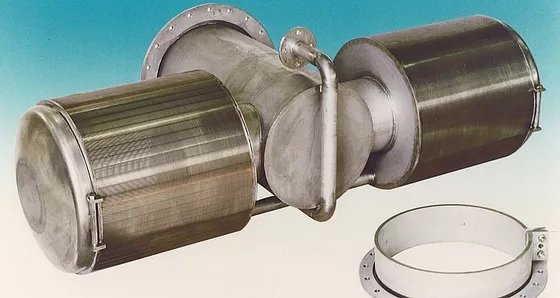
Customize Intake Screens
Mostly intake screens can be customized and installed in various patterns for the maintenance of the screen.
You can customize your intake screens by minimizing and maximizing the capacity.
Customizing intake screens is the best investment to
- Produce high-quality,
- Beneficial water,
- Low in turbidity (suspended solids or suspended matter)
- Diminish the damage caused by damaging agents.
Farmers using automatic pump sets to irrigate crops are likely to invest in pumps, flow control devices, and screens.
The general recommendation for groundwater pumping for irrigation is ten horsepower (HP) per 30 HP of the pump set.
Customized Screens are various, including
- sand wash screen,
- drum screen,
- multi-pocket impingement screen,
- passive screen,
- rotating drum screen.
| Industrial intake Screen | Fish Screen |
| · Industrial intake screens serve a more extensive range of applications in many industries. That’s why called industrial intake screens. · These also have heavier-duty frames designed to handle the stress caused by water flow. · They are intended to protect pumps, motors, and machinery from debris in the water. · These are combinations of multiple intakes screens. · Industrial intake screens, also called pressure screens, protect pumps or motors from debris in the water supply. · An Industrial Intake screen is a filter used to catch solid debris in aquaculture ponds, like plankton and algae. Since it works with water-splashing to filter the concrete rubble, it is called a “water-splashing screen.” · Industrial intake screens are usually installed at the inlet of pumps. · It is usually made of stainless steel. · It processes large amounts of water for municipal and industrial use. · It can be horizontal or vertical in shape. · It has multiple pipelines and structures for cleaning and providing desired output. | · Fish screens are often used in commercial aquaculture, where debris removal is less of a concern. · These are used in a certain amount of area where the fish form is designed. · These are intended to protect fish larva as well as the machinery from debris in the water. · These can be a single unit or multiple according to fish form area. · These are also called static screens and are used for cleaning the fish forms and debris in the water. · The fish screen is also a fish preventive device used in fishponds and aquatic farms. It has been widely applied in the aquaculture industry for many years. · Fish screens are usually installed in fishponds and tanks, and they have a great function to open and close automatically. · It can be made of perforated metal, netting, or fence wire. · These are located in low-traffic areas of fish. · It can be round, square, and rectangular. It has diverters like: · Airburst · Manifolds · Flat Panels · Guide rails · Baffle Plates |
Intake screen manufacturers must account for specific design parameters if they are going to optimize product performance.
One of these design parameters is approach velocity.
Approach velocity refers to the amount of water flow coming into contact with the screen.
You can determine this by the pumping speed, hydraulic head, and size of the weir opening.
When you need to manage low flow velocities and pump intake structures, the intake screen is perfect.
The intake Screen’s velocity aims to suit gravity setups.
Velocity creates a sustainable experience for fish health and efficient water extraction.
Even the flow of water across the entire screen surface helps prevent debris from sticking to the screen.
This low approach velocity is energy-efficient, automated, and helps prevent impingement on the screen.
There are a lot of options and features of intake screens. Few essential elements and optional components of intake screens are as follows:
- Chemical Burst
- Exotic Alloys
- Internal Distribution Plates
- Guide Brackets
- Diver Door
- Wedge wire Cap Ends
Chemical Burst
Chemical Burst Prevents impeding organisms from attaching to the screen.
Chemical bursts will be delivered on the inside of the screen and bursting to dissolve organisms.
Exotic Alloys
Exotic alloys make sure organisms glued to screens (such as Zebra Mussels) don’t ruin your equipment, and it’s essential to use a cover.
This is also good for your corrosive environment application of a saltwater pool,
Internal Distribution Plates
Internal distribution plates are used to provide a smooth distribution of particles across the intake screen surface.
Guide Brackets
These brackets are some kind of dividers or splitters to divide the processing area.
This process is about when you need installation and service structures. Think about the many benefits of rail-type installations.
Diver Door
This screening machine provides a manual diver door for the intake screens.
A manual entry that can be used to clean the desired water area to dive inside for cleaning.
Wedge Wire Cap Ends
To avoid stagnant water, Wedge wire Cap Ends is necessary to increase screening. This is an essential feature of the intake screens.
Not all intake screens do not come with an airburst system.
Airburst systems cannot be used with just any installation.
For the best results, manufacturers need to specially design and install according to the conditions of the water intake screen.
When designing an airburst system, designers usually only consider how the end-user will operate it.
Some airburst units are manual, while others are automated.
There are many applications of intake screens.
A few of the applications are described below:
- You can use intake screens to filter water from surface supplies. The water is then cooled and used for a variety of applications.
- Intake screen Supply water to desalination plants.
- You can use it to prevent pump and water-system components from debris such as leaves, moss, algae, sticks, and other troublesome materials.
- You can also use it in industries like paper and pulp, sugar mills, Municipal water supply, LNG plants, etc.
- Intake screens are perfect for use in open water applications like lakes, rivers, and reservoirs.
Intake screen prices can vary depending on the type and the manufacturing process.
Its cost also depends on the feature as well as the manufacturer increase the quality of product its price start increasing.
Its cost also depends on the material, its length, weight, and also many other factors.
The cost of a passive intake screen with
- Stainless steel wire,
- A round-shaped that applications are screening,
- Solid filtration separation,
- Liquid filtration
It is approximately US $5-325 per piece.
The price of a wedge wire water intake screen that has
- A 50000-production capacity,
- Diamond-shaped, single network structure with metal material
It is approximately US$ 99-199 per piece.
Duplex Stainless Steel 2507 Wedge Wire Johnson Passive Intake Screens cost is approximately US $1200 per meter etc.
The service life of intake screens depends on the
- Material of screen,
- The life span of your intake screens
- Screen size
- Mesh size
Because each material, nickel, aluminum, stainless steel, bronze, etc., has its density and lifetime.
They minimize biological effects and extend the life span of water filtration systems.
The service life of the intake screen includes:
- Top size assessment
- Refurbish and general maintenance
- Sectional inserts,
- Retrofit and full startup adjustments
It is needed for the service as mentioned above life factors that must be:
- Check for wear indicators to predict possible issues.
- Determine the approximate remaining life of your key components
- Trash rakes, barracks and stop logs, etc.
- Mud pumping, debris removal, and adequately cleaning. Etc.
The following essential specifications of intake screens are mentioned below.
You should communicate these specifications to your Supplier before ordering:
- Having approximate backwash flow at the pressure you need.
- Impingement debris while protecting aquatic life.
- Material type of intake screen.
- Make sure the compliance with federal, state, and local fish protection regulations.
- Wire profiles and slot size, range you need for the processing area of the intake screen.
- Having airburst system
- Dependable water delivery
- Flexible design for certain depth and locations
- Minimum pressure drop
For all your intake screens, contact FilSon Filters.
